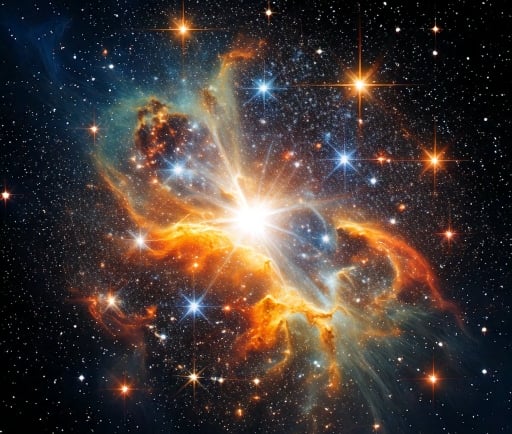The Herbig-Haro Objects: The Bright Patches of Nebulosity


Understanding Herbig-Haro Objects
Herbig-Haro objects are fascinating astronomical phenomena found within regions of star formation. These objects manifest as bright patches of nebulosity, marking the energetic interactions occurring around young protostars. They are formed when the stellar winds or jets of gas emitted by these newborn stars encounter nearby gas and dust, creating shockwaves that emit light and energy. This dynamic process not only highlights the vigorous activity associated with star birth but also provides key insights into the mechanisms involved in the formation of stars.
The Formation of Herbig-Haro Objects
The creation of Herbig-Haro objects involves complex physical interactions. As a protostar evolves, it expels material at high velocities, typically reaching speeds of several hundred kilometers per second. These powerful outflows collide with surrounding gas and dust, producing shockwaves that compress and heat the material, resulting in the emission of radiation across various wavelengths. The spectacular beauty of these bright patches of nebulosity often leads to vibrant colors, indicating the presence of different elements and the varying temperatures of the gases involved.
The Role of Herbig-Haro Objects in Astrophysics
The study of Herbig-Haro objects holds significant importance in astrophysics. They serve as natural laboratories for understanding the processes of star formation and the subsequent evolution of stellar systems. By analyzing these bright patches of nebulosity, astronomers can gain insights into the dynamics of molecular clouds and the interaction of protostars with their surroundings. The study of Herbig-Haro objects also aids in deciphering the characteristics of proto-planetary systems, ultimately revealing the conditions necessary for planet formation.
In summary, Herbig-Haro objects embody the energetic beginnings of stars, marked by their luminous and intricate structures. These bright patches of nebulosity not only captivate our imagination with their beauty but also are crucial to our understanding of the cosmos. As scientists continue to explore these regions within multi-hued spiral galaxies, we can expect to deepen our comprehension of the life cycles of stars and the formation of the intricate web of cosmic matter that fills our universe.
